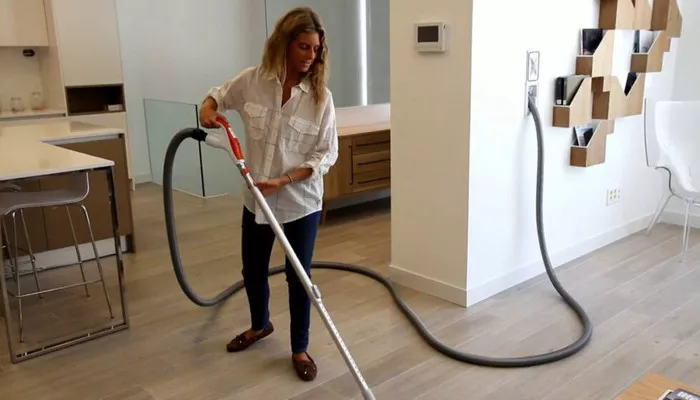Central vacuum systems offer unparalleled convenience and efficiency in keeping your home clean. However, to fully benefit from this innovative technology, it’s crucial to understand how to use it effectively. In this guide, we’ll walk you through everything you need to know to make the most out of your central vacuum system.
Understanding Your Central Vacuum System
Before diving into the specifics of using your central vacuum, it’s essential to familiarize yourself with its components and how it operates. A typical central vacuum system consists of three main parts:
1. Power Unit: This is the heart of the system, usually installed in a garage, utility room, or basement. It contains the motor and dirt collection bin.
2. Inlet Valves: These are strategically placed throughout your home, usually along the baseboards or walls. Inlet valves connect to the main vacuum unit via a network of pipes hidden within the walls.
3. Hoses and Attachments: These are the tools you use to clean your home. They include a hose that plugs into the inlet valves, along with various attachments like crevice tools, brushes, and upholstery tools.
Using Your Central Vacuum System
Now that you’re familiar with the components, let’s explore how to use your central vacuum effectively:
1. Prepare the Hose and Attachments: Before you start cleaning, ensure that the hose and attachments are securely connected. Check for any blockages or damage that may impede suction.
2. Open the Inlet Valve: To activate the central vacuum system, simply open the inlet valve by flipping the switch or pressing the button located near the valve. This will create suction and power the vacuum.
3. Begin Cleaning: Once the system is activated, you can start cleaning. Use the appropriate attachments for different surfaces and areas of your home. Move systematically from room to room, making sure to reach all corners and crevices.
4. Empty the Dirt Collection Bin: Periodically check the dirt collection bin in the power unit and empty it as needed. A full bin can reduce suction power and hinder performance.
5. Turn Off the System: Once you’ve finished cleaning, remember to turn off the central vacuum system by closing the inlet valve. This helps conserve energy and prevents debris from entering the system when not in use.
Maintaining Your Central Vacuum System
To ensure optimal performance and longevity, it’s essential to maintain your central vacuum system properly:
1. Regular Filter Cleaning: Depending on the model, your central vacuum may have a filter that needs regular cleaning or replacement. Refer to the manufacturer’s instructions for guidance on how often to clean or replace the filter.
2. Inspect Hose and Attachments: Periodically inspect the hose and attachments for any signs of wear or damage. Replace any worn-out parts to prevent loss of suction and maintain cleaning efficiency.
3. Check for Blockages: If you notice a significant decrease in suction power, check for blockages in the hose, pipes, or attachments. Clear any obstructions to restore optimal performance.
4. Professional Maintenance: Consider scheduling annual maintenance with a professional central vacuum technician. They can perform a thorough inspection and cleaning of the entire system, ensuring it operates at peak efficiency.
Conclusion
A central vacuum system is a valuable investment that can streamline your cleaning routine and improve indoor air quality. By understanding how to use and maintain your system effectively, you can enjoy years of hassle-free cleaning with minimal effort. Remember to follow the guidelines outlined in this guide, and don’t hesitate to seek professional assistance if needed.
FAQs
Q1: Can I install a central vacuum system in an existing home?
A1: Yes, it’s possible to install a central vacuum system in an existing home. While it may require some modifications, such as running pipes through walls and installing inlet valves, experienced technicians can typically retrofit central vacuum systems into most homes without major disruptions.
Q2: How often should I empty the dirt collection bin?
A2: The frequency of emptying the dirt collection bin depends on factors such as the size of your home, the number of occupants, and the presence of pets. As a general rule, check the dirt collection bin after each cleaning session, and empty it when it’s approximately two-thirds full to maintain optimal suction power.
Q3: Can I use my central vacuum system to clean wet spills?
A3: Most central vacuum systems are designed for dry debris only and should not be used to clean wet spills. Attempting to vacuum liquids can damage the motor and other components of the system. Instead, use a separate wet/dry vacuum or alternative cleaning method to address wet spills effectively.

